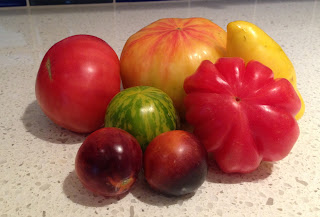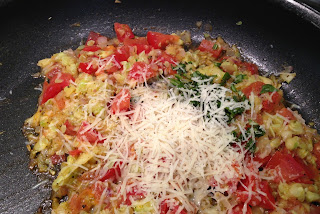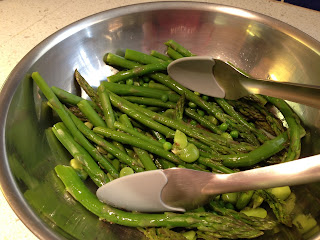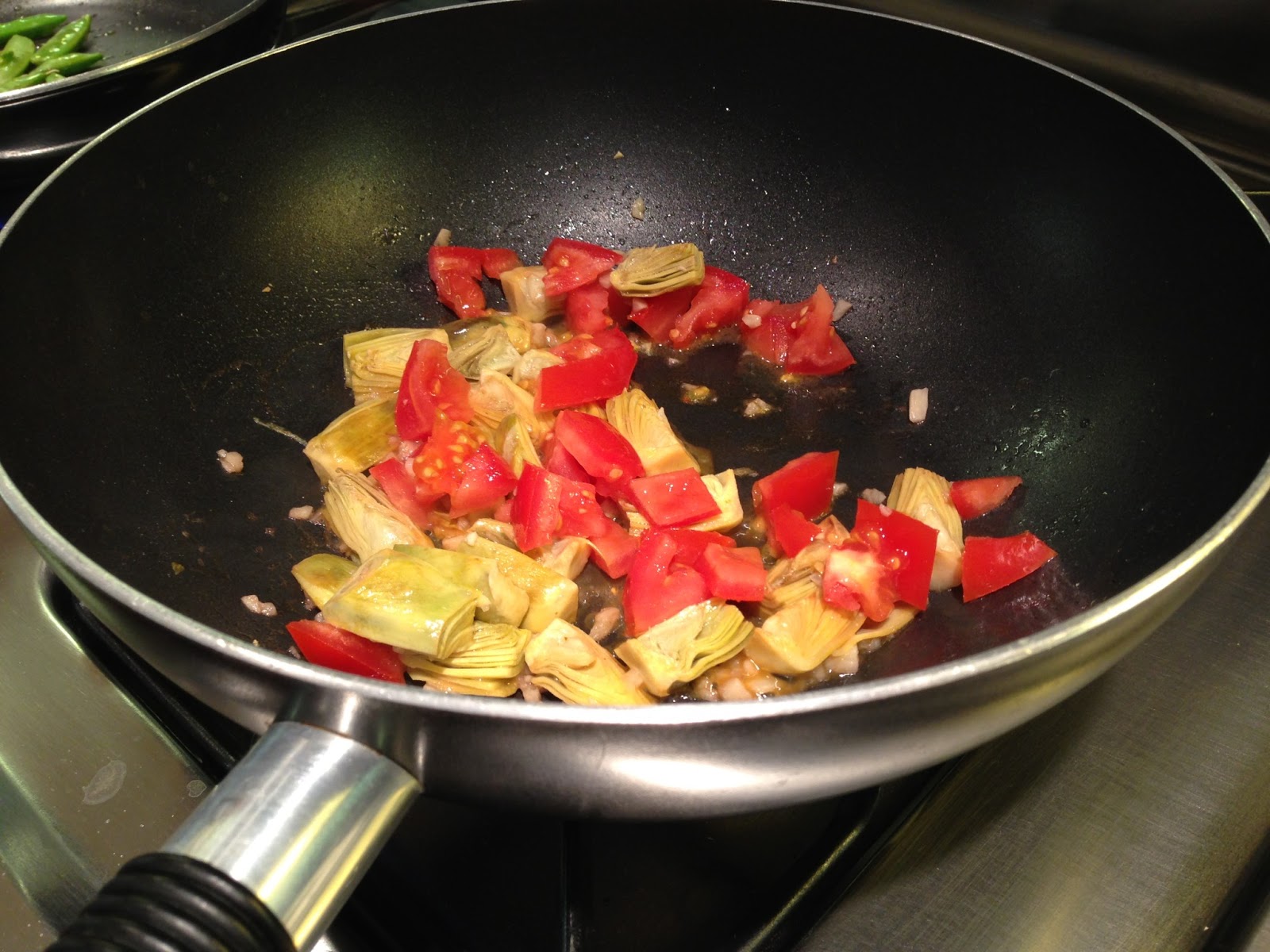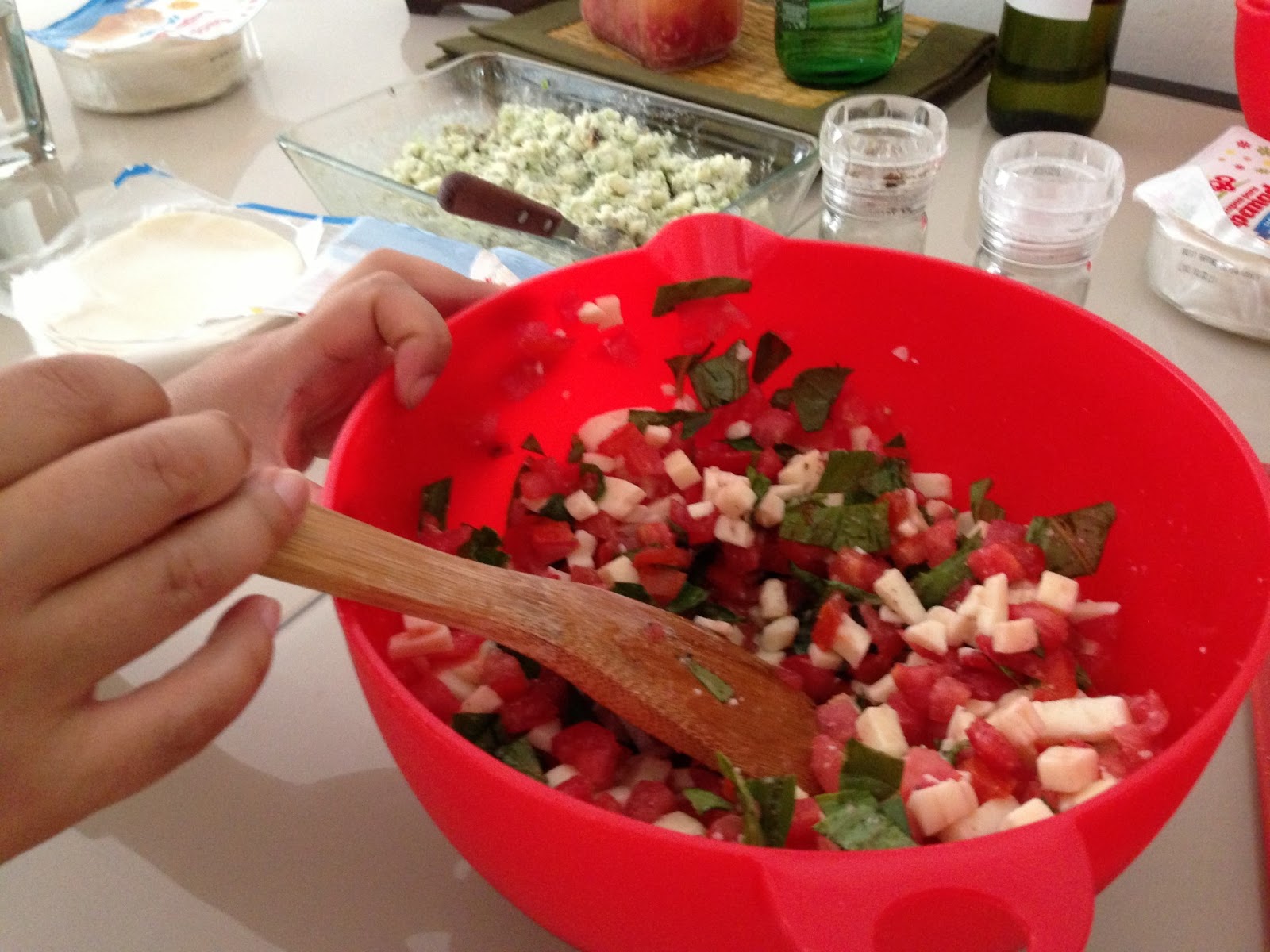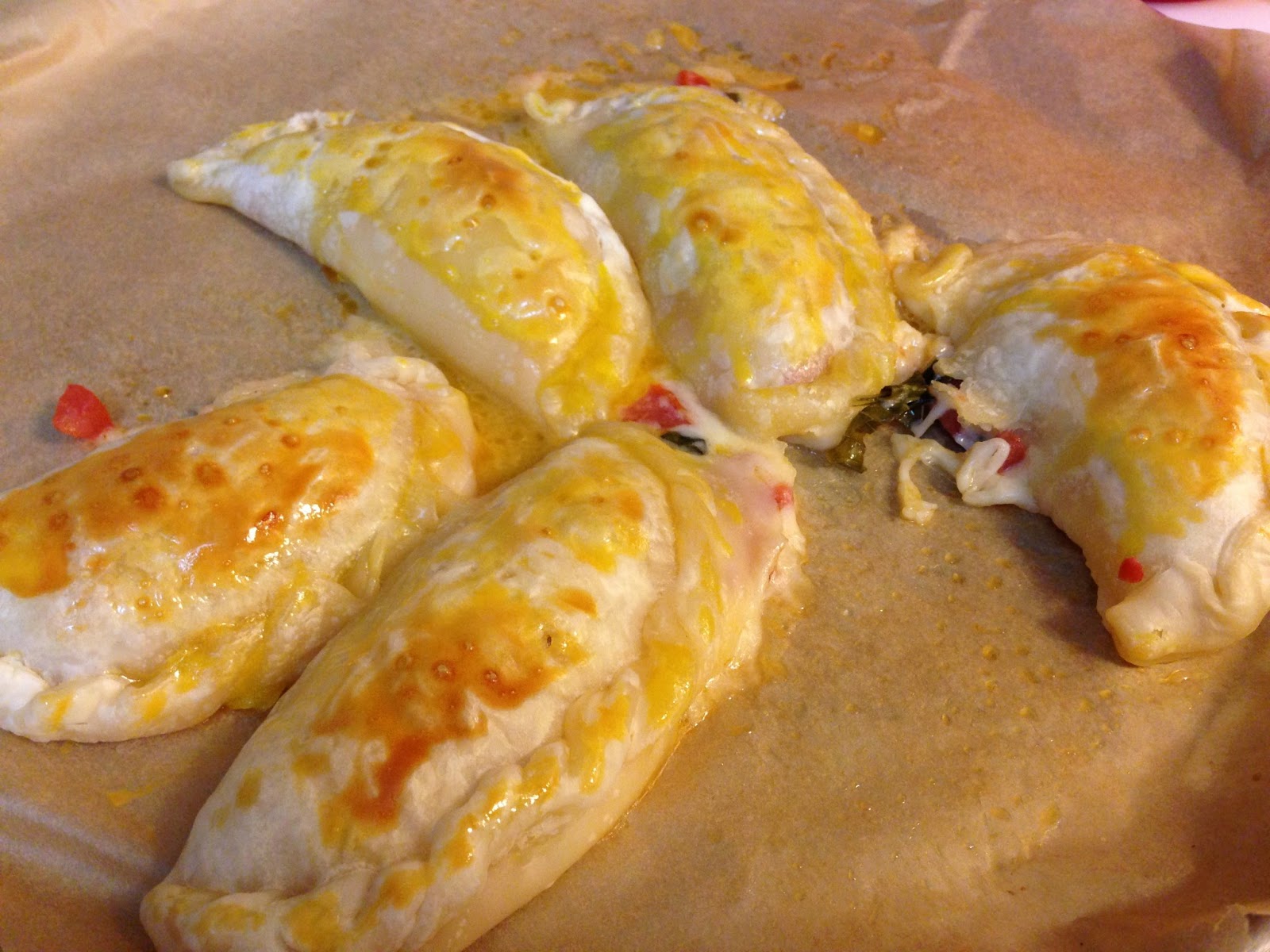I was working in the section that was highlighting foods from the nightshade family. Lots of eggplant, peppers and tomatoes! One of my favorites was from the chef at Contigo.
This was my first time eating padron peppers. Originating in the Padron region of Spain, they are now commonly grown in California. Usually the pepper is mild and sweet, but about 1 in 20 is hot...you never know what you are going to bite into!
I asked the chef for some pointers to re-create his dish at home and I was determined I was going to try to make it. Surprisingly a few days later, the CUESA website posted the entire recipe! You can find it here. I cut the recipe in half, and made it without the paprika (I didn't realize I didn't have any), but otherwise followed it exactly.
I took the kernels off of one cob of corn, but wasn't quite sure how to "milk" it. I just scraped off what I could with the back of a knife.
I sautéed the corn until it was caramelized, about 3 minutes on high heat.
Next, I sautéed the garlic in butter. Then added the corn "milk", rosemary, salt and pepper, and cooked for about 5 minutes. Then added the corn kernels and mixed everything together and set aside.
Here are the padron peppers:
These are then sautéed in a very hot pan with olive oil until they are blistered and slightly browned. I didn't use nearly as much oil as the original recipe (a few tablespoons vs. 1/2 cup).
Toast some baguette with a little olive oil on each slice. Then assemble. Spoon the corn mixture on the toast, then add a slice or two of Manchego cheese, and place a pepper on the top.
I think mine look pretty similar...although I probably should have trimmed the stems first...I think they look like little mice!
And now for the close-up!









